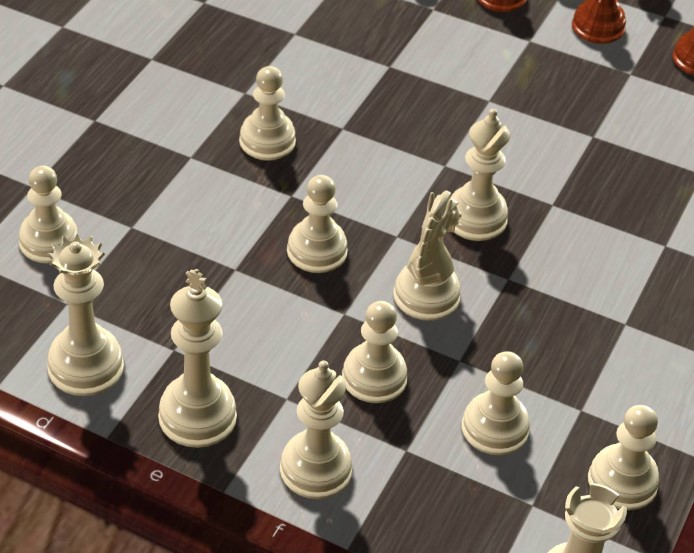
Chess is a timeless game that tests the intellect and develops strategic thinking. It is also referred to as the ‘game of kings’. While this game has numerous tricks and strategies, the London System is most loved by all.
The London System shines as a light for prospective players looking for a powerful yet approachable opening strategy in chess. In this trick, every move echoes centuries of strategic brilliance.
The London System, inspired by the famous 1922 London tournament, perfectly balances simplicity and efficiency. A unique pawn structure and tactical piece placement distinguish this system. All of this provides a strong foundation for players of all skill levels.
Whether a beginner or an experienced player, grasping the fundamental ideas, crucial tips, and tactical nuance will enable you to use the London System with assurance and grace. And if you are new to this trick, learn the London System quickly as we move ahead in this blog.
What Is The London System?

White’s opening plan, known as the London System, tries to control the middle of the board while keeping a strong and adaptable position. This technique has been popular for generations because it is efficient and easy to use.
The Pawn
The London System is based on a particular pawn configuration. White often develops the dark-squared bishop to f4 after placing pawns on d4 and e3. This pawn arrangement lays a solid foundation and clears the way for the logical progression of the pieces.
Piece Positioning
With the London System, piece development is simplified and made more effective. White deploys the knights to f3 and c3 after creating the pawn foundation, then the queen to d2. This configuration enables a strong defense while monitoring the center and queen-side squares.
Bishop to F4
The action Bf4 is a crucial move in the London System. A bishop on f4 can assault the critical d6 square, help the pawn of d4, and set up kingside castling, among other things. Your pieces will fit together perfectly with this thoughtful arrangement.
Get The Basics Right
After outlining the core ideas behind the London system, let’s go on to some crucial tips for playing it like a pro.
Manage The Middle
Controlling the middle squares is the core of every chess strategy. The London System restricts your opponent’s choices by influencing the center with your pawn structures on d4 and e3. Greater movement and flexibility in your piece coordination are made possible by this control.
Consistently Develop Your Pieces
The coordinated development of your compositions is essential to the London System’s success. The foundation for kingside castling was laid by knights to c3 and f3, followed by bishops to d3 and f4. This seamless progression ensures that your pieces actively assist in both the defense and the assault.
Keep Flexible Mind
The adaptability of the London System is one of its main benefits. Although it offers a strong framework, it also enables modification in response to your opponent’s actions. As the game progresses, be prepared to modify your approach while keeping in mind the overarching objectives of retaining control and planning for deadly attacks.
Pay Attention To Pawn Breaks
In chess, it is essential to comprehend pawn breaks, and the London System is no exception. Pay close attention to any potential pawn breaks by your adversary, particularly in the center. Prepare yourself to retaliate with strategic movements that protect the integrity of your pawn structure while taking advantage of gaps in your opponent’s defense.
Strategies And Tactics

You must become familiar with the typical techniques and ideas used initially if you want to play the London System like a true expert. Follow the tricks below:
D-File Under Pressure
The pawn on d4 causes the d-file to become the center of attention for assault and defense. Utilize your rooks to exert dominance over this file and put the other player’s position under strain. Strong threats and holes can be made in your adversary’s camp by doubling your rooks on the d-file.
Kingside Attack
A kingside attack can be launched on a strong base in the London System. Therefore, consider moving your kingside pawns after your pieces are developed to expose gaps in your opponent’s defenses. If your opponent’s king is still in the middle, this might result in strong attacks.
Focus On The Opponent’s Structure Weaknesses
Pay attention to any pawn structure flaws your opponent may have as the game goes on. To take advantage of these flaws, one might use the London System. Targeting particular squares or pawn chains may result in advantageous exchanges and present chances for a definite advantage.
Typical Errors And How To Avoid Them

The London System is no exception to the rule that even the finest plans have their drawbacks. Here are some common ones and ways to avoid them.
Excessive Use Of Pawns
While center control is crucial, be careful not to overextend your pawn arrangement. Be smart in your pawn moves because each one introduces new weaknesses. A strong foundation is essential because pawn movements that aren’t necessary might leave your position vulnerable to counterattacks.
Disregard For King Safety
Don’t sacrifice your king’s security in the name of aggressive play. A crucial component of the London System, kingside castling offers your monarch a safe sanctuary. Avoid postponing casting or putting your king in danger by doing so.
Ignoring Your Opponent’s Plan
Focusing entirely on your plans without considering your opponent’s approach is a typical error. Monitor other players’ actions, evaluate them, and adjust your strategy as necessary. You can make wise selections and keep the game under control if you are aware of their goals.
Final Thoughts
Players of various skill levels can use the London System, a strong and straightforward opening. Understanding its concepts thoroughly allows you to improve your chess performance and play the London System like a pro. Above all, practice is compulsory for learning any new skill. So, set up the chessboard, practice your moves, and have fun on your quest to master the game.











